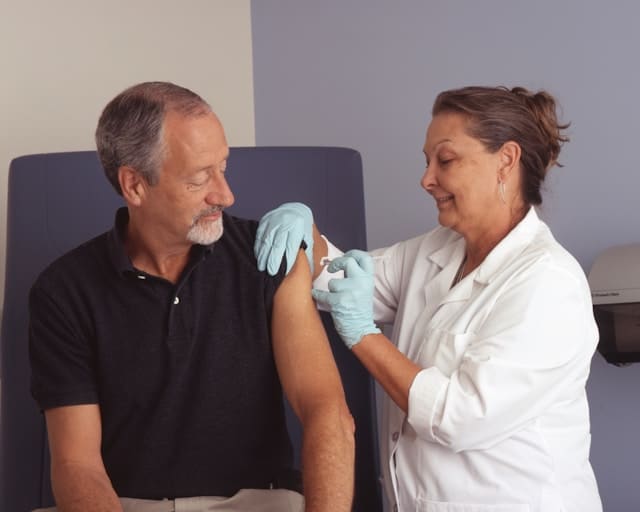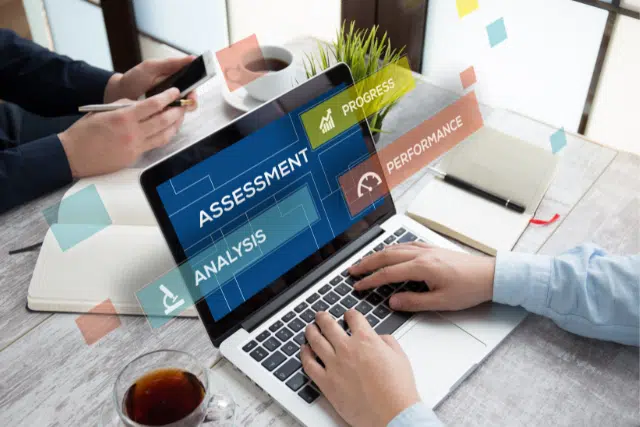Six Key Drivers for Pursuing Higher Education in Pharmacy
With increasing demand for healthcare services and advancements in pharmaceutical research, the need for highly knowledgeable pharmacy professionals has never been greater. By pursuing higher education in this field, you can position yourself at the forefront of this rapidly changing industry.
This article aims to explore a few compelling reasons why you should consider furthering your education in pharmacy.
Supporting Patient Health
Higher education in pharmacy equips you with the knowledge and skills to support patient health effectively. You’ll learn about various disease states, medication therapies, and patient counseling techniques. This enables you to provide personalized care and improve medication adherence among patients.
Through advanced education, you gain a deeper understanding of pharmacology and therapeutics. This knowledge allows you to assess medication regimens, identify drug interactions, and optimize treatment plans. By staying informed about the latest advancements in pharmaceutical care, you can contribute to better patient outcomes and promote overall health and wellness.
Today’s healthcare environment is rapidly shifting, with patients’ needs moving from traditional approaches to more collaborative care. To assess current needs and challenges, Surescripts surveyed 509 pharmacists and prescribers, including physicians, physician assistants, and nurse practitioners.
As prescribers face several challenges, including burnout, shortage, and retirement, pharmacists are poised to help. The survey confirms the need for and effectiveness of team-based care, which involves both prescribers and pharmacists.
The benefits are numerous when pharmacists take more responsibility for patient care. About 78% of prescribers and 92% of pharmacists agree that improved patient outcomes are one of the top benefits. Moreover, 51% of prescribers and 42% of pharmacists consider better patient experiences as another benefit of this approach.
Enhancing Clinical Skills and Knowledge
You can enhance your clinical skills by pursuing advanced degrees such as the Master of Science in Pharmacy. These programs offer specialized training in areas like pharmacotherapy and patient care. With a master’s degree, you’ll gain in-depth knowledge and hands-on experience to excel in clinical practice.
Another program that facilitates gaining cutting-edge skills and knowledge is the Doctor of Pharmacy (PharmD) program. What makes PharmD unique is its accessibility: it’s the only doctoral degree you can pursue directly after completing a 10+2 education. This streamlined path allows you to embark on your desired career earlier and start making a difference in patient care sooner.
Moreover, these programs are also available online, catering to busy individuals’ needs. An online Doctor of Pharmacy program offers flexibility and convenience, enabling you to balance your career and education.
According to the University of Findlay, the PharmD program can be completed in four years. The program emphasizes experiential learning, allowing students to gain valuable hands-on experience beyond the virtual classroom. This combination of structured online instruction and practical training prepares students effectively for their future roles.
Empowering Community Health Initiatives
Empowering community health initiatives is a vital aspect of pursuing higher education in pharmacy. By engaging in community outreach programs, pharmacists can educate the public on preventive health measures and contribute to reducing healthcare disparities.
One way in which pharmacists empower community health initiatives is by providing medication therapy management (MTM) services. Pharmacists also participate in interdisciplinary healthcare teams, contributing their expertise to comprehensive patient care plans and supporting holistic approaches to wellness.
Furthermore, you can advocate for public health policies that promote access to affordable medications and healthcare services. By engaging in legislative advocacy and community organizing efforts, you can influence policy decisions that impact the health and well-being of communities.
Through these initiatives, pharmacists demonstrate their commitment to improving population health and addressing healthcare challenges at the grassroots level.
Fostering Professional Networking and Collaboration
Networking challenges are evident among pharmacy stores, such as Health-System Specialty Pharmacies (HSSPs). HSSPs offer personalized medication management, patient education, and coordination with healthcare providers to optimize treatment outcomes for patients.
According to a study by the American Society of Health-System Pharmacists, the top challenge faced by 75% of HSSPs was access to payer networks.
Roughly 66% of participants noted that network barriers discouraged them from filling over half of the specialty prescriptions made within their health systems. Moreover, nearly 46% of HSSPs cited hiring and retaining skilled workers as a significant challenge. The findings indicate a higher need for professional networking to effectively tackle the current challenges.
Networking facilitates access to payer networks, which is crucial for pharmacies’ financial stability. By establishing connections with payers, pharmacies can negotiate favorable reimbursement rates, ensuring sustainable operations.
Networking enables pharmacies to collaborate with healthcare providers and specialists, enhancing their ability to fill specialty prescriptions. By forging partnerships and maintaining open lines of communication, pharmacies can ensure timely access to specialized medications for their patients’ needs.
Effective networking aids pharmacies in recruiting and retaining skilled workers. Building relationships with healthcare professionals and educational institutions can provide access to a pool of qualified candidates and foster ongoing professional development opportunities.
Expanding Career Opportunities
A large number of pharmacy graduates tend to open their local pharmacy stores. This is attributed to increasing demand for different medicines, higher profits, and public faith in pharmacies, among other factors. However, a recent study by the National Community Pharmacists Association unveiled a few shocking realities currently faced by these local pharmacies.
According to the new NCPA survey, 32% of pharmacists are likely to close their stores in 2024 due to a cash crunch. Plus, 93% are expected to withdraw from Medicare Part D in 2025 if they experience a similar scenario as in recent years. These trends would significantly reduce access to medicine across the United States, particularly for senior citizens.
In this tough scenario characterized by high government regulation on pharmacies, new graduates have no option but to consider other career opportunities. One pathway is pharmaceutical industry roles, such as drug development or regulatory affairs positions. In these roles, you can contribute to research, clinical trials, and drug approval processes, shaping the future of healthcare.
Another career pathway is healthcare administration, where professionals can assume leadership roles in hospitals or healthcare organizations. Pharmacists in administrative roles oversee medication management systems, ensure regulatory compliance, and optimize healthcare delivery processes.
Moreover, you can pursue careers in academia, teaching future generations, and conducting research. In academic settings, these professionals contribute to advancing pharmaceutical knowledge, shaping pharmacy curricula, and mentoring aspiring professionals. These diverse career pathways offer opportunities for growth, innovation, and impact beyond traditional pharmacy settings.
Advancing Research and Innovation
Driving research and innovation is a key motivator for pursuing higher education in pharmacy. Higher education equips you with the necessary research skills and knowledge to explore innovative solutions to healthcare challenges.
By engaging in research projects and scholarly activities, you can contribute to scientific advancements and shape the future of pharmacy practice. Through collaboration with interdisciplinary research teams, you leverage their expertise to address complex healthcare issues and drive positive change in the field.
By staying abreast of the latest research developments, pharmacists can provide cutting-edge therapies and improve health outcomes for patients across diverse populations.
Frequently Asked Questions (FAQs):
How Can I Improve My Pharmacy Knowledge?
To enhance your pharmacy knowledge, regularly engage in continuing education programs and workshops. Stay updated on the latest research and guidelines by reading scholarly journals and attending conferences. Additionally, seek mentorship from experienced pharmacists and actively participate in professional networking opportunities.
What Are the Qualities of a Pharmacist?
A pharmacist must possess strong communication skills to effectively interact with patients and healthcare professionals. They should demonstrate attention to detail and accuracy in dispensing medications and managing patient records. Additionally, pharmacists need to stay updated on healthcare advancements and demonstrate empathy and professionalism in patient interactions.
What Is the Highest Level of Education in Pharmacy?
The highest level of education in pharmacy is the Doctor of Pharmacy (PharmD) degree. This professional degree prepares pharmacists for clinical practice and qualifies them to obtain licensure. PharmD programs typically require four years of study beyond undergraduate education.
In conclusion, pursuing higher education in pharmacy offers numerous benefits and opportunities. From expanding career options to empowering community health, the drivers behind furthering your education in pharmacy are compelling. By investing in your education, you can enhance your skills, contribute to the advancement of healthcare, and make a meaningful impact on patient care.
Six Key Drivers for Pursuing Higher Education in Pharmacy Read More »

























































